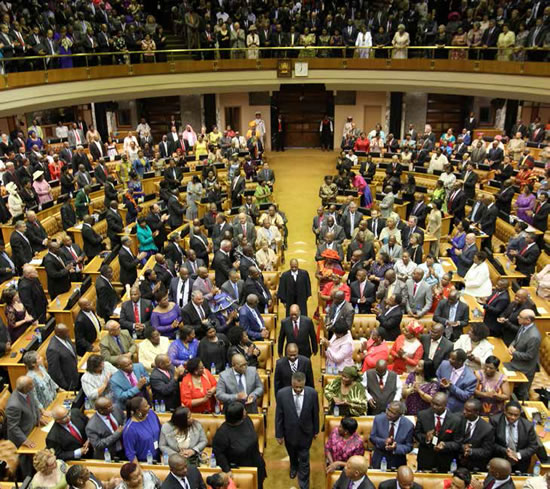Parliament is one of the important institutions in a democratic setup, responsible for making laws, electing a President and holding government accountable.
 In South Africa, Parliament is divided into two houses - the National Assembly and the National Council of Provinces (NCOP).
In South Africa, Parliament is divided into two houses - the National Assembly and the National Council of Provinces (NCOP).
The National Assembly is led by the Speaker, who is responsible for matters relating to the work of Parliament. The National Assembly is made up of Members of Parliament (MP), who are from all the political parties represented in Parliament. Ministers, deputy ministers, chief whips and whips also make up Parliament.
The second house, the NCOP, is responsible for the law making process and provides a forum for debating issues affecting the provinces.
Its main focus is to ensure that provincial interests are taken into account at the national sphere of government. This house is led by the Chairperson, who oversees its smooth running.
Over the past 20 years, Parliament has moved from being a secretive institution under apartheid to being more inclusive and transparent.
According to public education practitioner at Parliament, Kenneth Bange, Parliament now includes the public in its activities.
“This has been done to make sure that ordinary South Africans become part of the proceedings unlike the government before 1994, which was aloof and no one knew what was happening,” he explained.
Bange has been working at Parliament for the past 20 years. He started there in 1994, running errands for MPs and was later an administration clerk.
Bange was one of the fi tour guides when Parliament started a tour unit in 1997. Later he became a public education practitioner.
According to Bange, it was the late former President Nelson Mandela’s idea to include the public in the proceedings.
“I’m told that Mr Mandela was the one who suggested a civilian guard of honour during the State of the Nation Address because in the past it was mostly a military affair,” he said.
The first building that housed Parliament was constructed in 1885 and is currently used for various committee meetings. Henry Grives was the architect of that building. The second building, which houses the National Council of Provinces, was built in 1910 by the Union of South Africa and was designed by Sir Herbert Baker.
The last building, which is the current chamber where Parliament sits during important events such as the State of the Nation, was built in 1985 and was designed by different architects, said Bange.
Among the notable changes that Parliament has gone under since 1994, is the establishment of a tour unit, the use of all official languages, increased access by the public and a bigger staff complement.
Bange said most people think that the National Assembly is the only important house and visitors prefer it to the NCOP.
“There is still that misconception that the NCOP is a poorer cousin of the National Assembly. That is not true, both houses are important and they both perform their roles in different ways,” he explained.
Bange added that many people believe Parliament’s responsibility is only to pass laws and rubberstamp the word of the ruling party.
“Parliament does not only pass laws. It plays an oversight role, scrutinising and assessing the impact of government policies. It also ensures that government remains true to its policy commitments and is ac- countable to the people,” he said.



 Facebook
Facebook Twitter
Twitter WhatsApp
WhatsApp